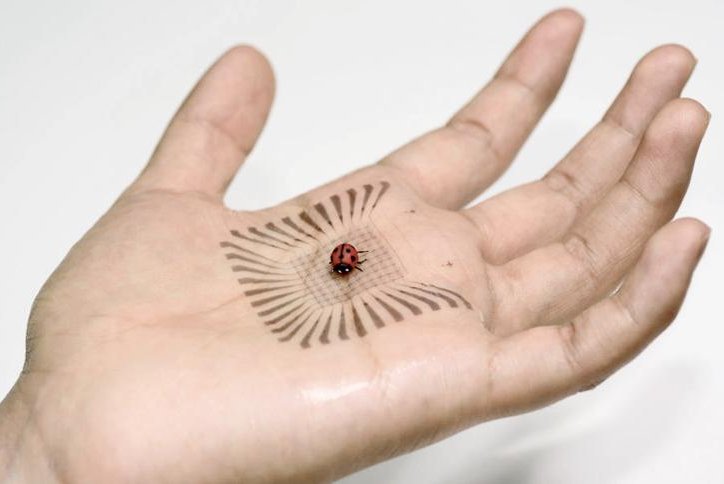The new artificial skin is sensitive enough to sense the tiny footprints of a ladybug. Photo by L.A. Cicero/Stanford
Feb. 21 (UPI) -- People with prosthetic limbs live without the ability to touch and feel the world around them. That could change in the near future thanks to new technology developed by scientists at Stanford University.
As described in a newly published Nature paper, researchers have developed stretchable electronic skin sensitive enough to feel the footsteps of an artificial ladybug.
The artificial skin's physical attributes are impressive, but the study's biggest breakthrough might be the new techniques used to produce the novel polymer. Scientists developed a more efficient and scalable method for creating electronic skin.
"Research into synthetic skin and flexible electronics has come a long way, but until now no one had demonstrated a process to reliably manufacture stretchable circuits," Stanford chemical engineer Zhenan Bao said in a news release.
The new artificial skin is formed by layers of hi-tech polymers. Some layers enhance the skin's elasticity. Other layers feature the electronic meshing that allows the circuitry to be embedded in the skin. Still more layers help insulate the electronic components and provide waterproofing.
"We've engineered all of these layers and their active elements to work together flawlessly," said post-doctoral researcher Sihong Wang.
The skin can stretch to twice its size without impacting the sensors embedded in the polymer layers.
Scientists hope the new layering approach will pave the way for the production of polymers with all kinds of embedded electronic circuits and sensors. While researchers say they need to improve upon the speed of the current prototype's electronic system, scientists are confident the technology could soon replace more rigid electronic components and circuitry.
And though complete artificial skin may still be a ways off, the technology could soon be used to install elastic touch screens for use in smart clothing, wearable electronics or medical devices.
"I believe we're on the verge of a whole new world of electronics," Bao said.















